Government and Blogs
-
-

Best of the week: 2 June to 9 June 2024
- The Wellingtonista
- Our weekly roundup of best things in Wellington continues and this week we’ve got contributions from Alan, Joanna, Martha and Tom. Best new place for dogs off leash We discovered that dogs are ok unleashed on the Remutaka Incline so we were able to take our fluffbeast biking with us (she’s got her own bike […]
- Accepted from Wellingtonista Blog Feed by feedreader
- Tagged as:
- dogs
- wellington-city-council
-
-
-

More Town Hall
- Eye of the Fish
- Thanks to Greenwelly for alerting me to the substantial report on the WCC website, which is both exhausting, and fascinating. There will be a book...
- Accepted from Eye of the Fish feed by feedreader
- Tagged as:
- wellington-city-council
- town-hall-strengthening
-
-
-
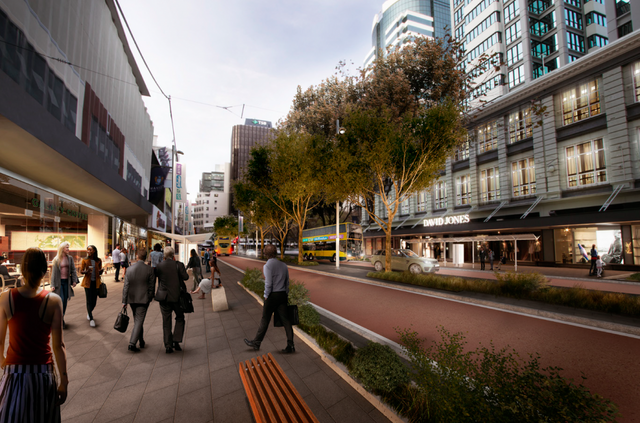
Let’s Get Wellington Moving: please, councillors, keep your eyes on the prize
- Talk Wellington
- A bunch of WCC councillors are poised to throw not just the proverbial baby, but our whole reproductive system out with the bathwater. Sounds stupid? It is. Yet here we are, so please help keep their eyes on the prize! What’s happening on Thursday? Wellington city councillors have to vote whether to support or oppose...
- Accepted from Talk Wellington posts by feedreader
- Tagged as:
- wellington-city-council
- lets-get-wellington-moving
-
-
-
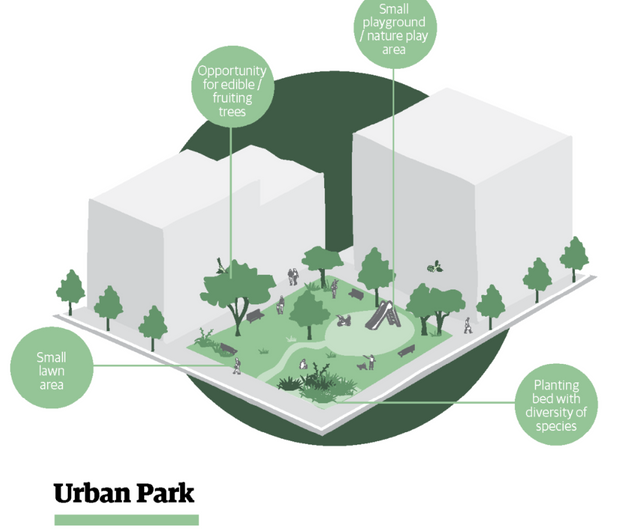
Green and Blue
- Eye of the Fish
- The WCC sub-committees are going flat out at the moment, consulting wildly on this and that and approving all manner of things – I can...
- Accepted from Eye of the Fish feed by tonytw1
- Tagged as:
- wellington-city-council
-
-
-
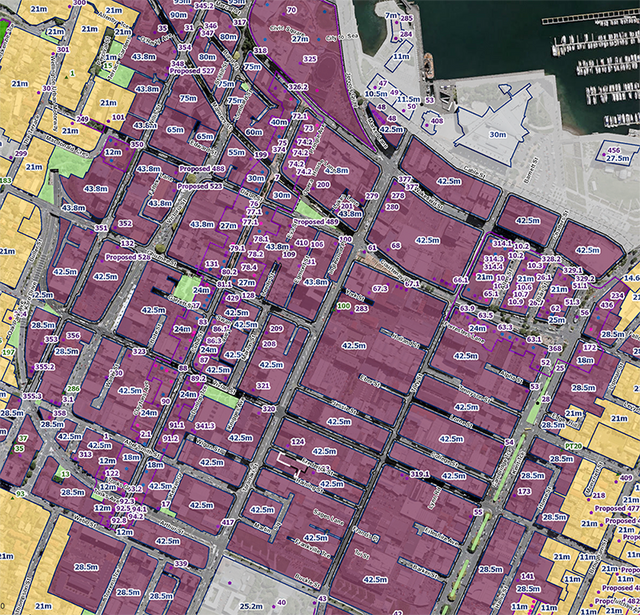
New District Plan
- Eye of the Fish
- A new (proposed / draft / actual – who knows, really?) District Plan has dropped and it fills me with dread. Horror. Revulsion. They’ve only gone and screwed it up again, haven’t they? I’m not going to mince my words about this – what is being proposed in terms of height limits in the Central Area is a crime against humanity.
- Accepted from Eye of the Fish feed by tonytw1
- Tagged as:
- wellington-city-council
-
-
-
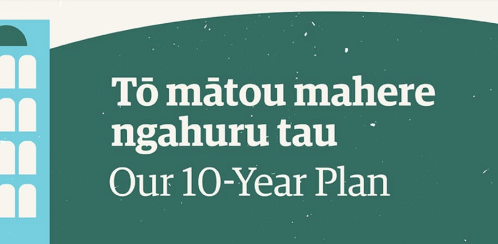
WCC Long Term Plan: Your Submission Guide
- Talk Wellington
- “Don’t tell me what you value; show me your budget and I”ll tell you what you value”.
- Accepted from Talk Wellington posts by feedreader
- Tagged as:
- consultation
- wellington-city-council
-
-
-

Swan Lane and Garrett Street
- Eye of the Fish
- A missive has arrived from Wellington City Council, outlining that they have a plan for some changes around Garrett St (just off Cuba St) and Swan Lane (opposite Garrett St).
- Accepted from Eye of the Fish feed by tonytw1
- Tagged as:
- consultation
- cuba-street
- wellington-city-council
Cuba Street, Te Aro, Wellington, Wellington City, Wellington, 6011, New Zealand (OpenStreetMap)
-
-
-

A city with a vision? AKL x WLG
- Talk Wellington
- Wellington’s got a lot of bustle and noise (Let’s Get Wellington Moving – Spatial Plan – new subdivisions – convention centre – library) but where’s the coherent vision? Hey Auckland – can we learn some things? The Wellington Urbanerds invited some insightful Aucklanders to talk about the Auckland City Centre Masterplan (CCMP) because it’s getting a lot of positive interest in nerdy circles nationwide, and we thought “Wellington needs one of those to galvanise our progress!” But it turns out that the CCMP is not the cause of Auckland’s progress – it’s a milestone marker of a bigger evolution in Tāmaki. Auckland City Centre’s chief urban designer George Weeks was insightful, visually engaging and occasionally very funny. Auckland city centre’s chief transport designer Daniel Newcombe injected insights that were pithy and thought-provoking. All up it’s worth watching the video – details at the bottom. But this post has some of the big insights for Wellington that we took away. Hat tip to Charles Dawson for invaluable note taking. A galvanising vision, with a strong whakapapa What makes the CCMP unusual as an official planning document, Weeks told us, is that it’s not “a planner’s plan” – 2,000 pages of vision down to prescriptive requirements. Instead it’s “the brochure for the city centre”. He told us that “with the 2012 CCMP, we thought it was better to have a 200 page document that 10,000 people see, or at least have skimmed, than a 2,000 page document that 100 people read in detail. We have used this approach to shape the 2020 CCMP.” It has had a major refresh in the last 8 years and the 2020 version is quite something. Galvanising vision Weeks took us through how the updated CCMP works: how it delivers on the Auckland Plan’s promise of life in Auckland, through the city centre’s form and function. It’s worth laying these out because while we definitely have bits of the formula, there’s some powerful elements we’re missing. Experience of being there The Auckland Plan (essentially the Tāmaki-Makaurau 30-year plan) sets out ten Outcomes for the city – effectively the promise of life experience that you should get, being in Auckland. The whole super-city is supposed to fulfil these promises, and the city centre’s no exception. In the CCMP, the ten citywide Outcomes or life promises are intertwined with eight place-specific Transformational Moves. The latter are the major initiatives to change the physical environment of the city centre so it can deliver those outcomes – the good Auckland experiences – for anyone who’s there. A lot of this has come into the 2020 CCMP thanks to Access for Everyone (A4E), the city centre’s transport programme done to support the CCMP refresh process (more on A4E later). Street forms and place shapes… So the 2020 CCMP has street explainers that show – conceptually but with a lot of verisimilitude – the components of the streets and buildings, the overall shape of the whole public realm that’s needed for the city centre to give people that great experience. a generic “transit street” explainer – from the CCMP These explainers are conceptual, but are tied enough to specific places, that everyone can see the trajectory of how their specific bit of the city will be changing, but crucially they can see a really solid why. …because This means “X street, and its environment, should have Y shape and form because…”. We saw, for example, that one of the biggest streets in the Learning Quarter, Symonds Street, will be a transit street for all these reasons: Symonds St, for example, needs to become a transit street not because of some abstracted notion of “sorting out the transport” but because it is at the heart of Auckland’s city centre universities, and “transit street” is the form for Symonds Street that will let it best serve people in the Learning Quarter with the good experience the Auckland Plan promises. Weeks flicked through a few examples of how the CCMP is signalling change to the built environment of Tāmaki’s city centre (which is pretty interesting – have a play here, the 2020 version is fully digital!) Our impression of all this was that the CCMP, thanks to the Auckland Plan and Access For Everyone (the transport dimension), has pretty well integrated two things that any self-respecting city needs to integrate. This is the roles of movement (transport) and place or exchange (destination activity) in any given area of the city centre. And Auckland manages to integrate these with a nice clear Why and Because for each set of changes. [Hold on, is that anything special? We know about this stuff… This tight integration – of form to function, place with movement, built form to people’s lived experience – seems pretty elementary for self-respecting cities. And you’d be forgiven for assuming Wellington has that integration in place. Indeed, things like the street concepts in Auckland’s 2020 (refreshed) CCMP don’t look too dissimilar to what LGWM put out for the Golden Mile. And the material coming out from LGWM and the Central City elements of the Spatial Plan and Wellington 2040 use a lot of the right words. Golden Mile concept from LGWM But in listening to Weeks’ presentation, we realised just how explicit and unequivocal the CCMP and A4E are about the why, the because for the physical city changes they describe, anchored home to that lived experience promised in the Auckland Plan. And the locked-in coupling between the place / destination train and the movement / transport train so they’re pulling each part of the city in the same direction towards that better experience for all Aucklanders. This coupling is something we’re muddling around in Wellington. We’re hedging our bets on saying explicitly what lived experiences we want to prioritise and privilege in our city centre. This means the transport planning and place planning are making (at best) vague bows in each other’s direction, with lots of hedging our bets about whether and how we’re prioritising “drive-through” vs “go-to” in our city centre. OK back to the presentation…] Galvanising and enabling Weeks told us that in the CCMP, when you combine the Auckland Plan’s Outcomes and the CCMP’s Transformational Moves, the product is the city centre “Opportunities”. Opportunities are projects, quite specific things, and there are quite a few listed. click on the image to have a play in the CCMP Opportunities But they’re not a set of business-case investments that clamp tunnel-vision onto ambition. They seemed to be as much illustrating the kinds of projects that would make the city centre better at giving people that great experience of Auckland living. As Weeks emphasised: “anyone can come up with an Opportunity”. (We imagine the galvanising could run like this… Hello, I’m a developer looking at buying or developing neighbouring Building X and Building Y, I can see the direction of profitable change and unprofitable change that I could make to that property, given the trajectory of change in its environment. And I can make up a project that creates a much better laneway space between them, plus better delivery access, better stormwater handling, and augmented residential-plus-commercial uses… This bundle of investments will make me money, and enhance really well that little corner of the city – so public investment and other private are likelier to come join me… ) CCMP’s generic laneways explainer (click to expand) Lesson for Wellington: let the vision be the vision, get other activity making it reality A big lesson for Wellington, Weeks said, was to “be clear about what different plans are to do. The City Centre Masterplan sets the vision, which allows many actors to work out how to deliver its different facets, or to develop their own ideas too.” The CCMP is only the green-circled bits in this picture. CCMP: a strong whakapapa The CCMP’s technical pedigree is strong – it makes good application of internationally-accepted principles of urban physics and urban dynamics. But – as Weeks put it – if the CCMP can “see further, it’s because [it is] standing on the shoulders of giants”. Complementing the CCMP’s technical pedigree is its collective human ancestry: the people, organisations, and relationships that have coalesced around it, the support that it’s known and seen to have, and the mana that this contributes to its strong legitimacy and mandate today. From the presentation a few points stood out on each of these… The technical pedigree of the CCMP Weeks and Newcombe gave us a whistle-stop tour of the set of transport and urban planning documents of which the 2020 CCMP is the progeny. Auckland Unitary Plan – The supercity’s first joined up District Plan, the “rulebook” for implementing the Auckland Plan. Forced much more collaboration in planning, for everything. City Centre Future Access Study – NZTA, Ministry of Transport, Auckland Council, Treasury, Auckland Transport found the City Rail Link would blitz all other 46 options for getting people to and from the city centre. The City Rail Link (CRL) – an underground railway link turning the city centre heavy rail terminus into a through-station, building 4 new underground stations. Doubles the number of Aucklanders with 30min access to city centre. After years of arguing, finally underway once tax was to pay 50% (thanks ATAP). Auckland Transport Alignment Project (ATAP) (2016-17, updated 2018) Auckland-region-wide (not just one bit) merit-based priority list of all the big-ticket transport projects, costed and agreed by all funders and deliverers. Crucially: first acknowledgement by central government that Auckland couldn’t road-build its way out of its traffic problems Business Case for Walking – first quantification of the value of city centre walking to Auckland’s economy, done in 2017. [Hey “walkable capital”, where’s ours?] The creation of documents always sounds more coherent in retrospect, but Weeks and Newcombe emphasised that it’s not been a nice clean sequential progress. Key principles of urban physics (like the role of people walking) have only been given oxygen relatively late in the sequence. The need to get tax funding to co-fund megaprojects has meant a lot of back-and-forth raruraru with central government, and between the various bits of Auckland’s council family. And some great documents – like the Business Case for Walking mentioned above – have no official legal weight: a decision-making body can completely ignore them if it wants. But we heard that the various documents have meant that amongst the bureaucracy and other government power-holders, there’s been an accumulation of key principles of good urban physics, akin to accumulation of organic matter. Sometimes it’s just leaves falling, but sometimes there’s a large trunk. These accumulations in the establishment’s hivemind make it much harder to go back and relitigate, as there’s been some crystallisation in the thinking. (Though, of course, as Newcombe noted, that doesn’t stop people trying!) Access for Everyone – the complementary transport element of the City Centre Masterplan which was developed as part of the CCMP refresh – is a great example. In traditionally car-mad Auckland, the entire Auckland Council voted unanimously to begin A4E trials “enabling a decisive mode shift away from private vehicles, to make better use of finite city centre space and improve the quality of the environment.” Wow. Access For Everyone’s car-free Queen Street / Horotiu Valley with Low Traffic Neighbourhoods around. And no more driving through the city centre! The human side of CCMP’s whakapapa We heard that a major benefit of the sequence of documents was the relationships and conversations that a document creates a pretext to have. There’s been a lot of investment in behind-the-scenes engagement, with big stakeholders in the city. This has paid off in an unusual level of big players’ trust and buy-in to the vision and the big moves to get there. From large developers, through Heart of the City (the inner city Business Improvement District), through the AA, NZTA, to the City Centre Residents’ Group (fun fact: 40,000 people live in Auckland’s city centre alone). This good stakeholder engagement bears fruit: it enabled councillors to support the 2020 CCMP relatively easily, despite it having relatively little engagement from the wider public (a few hundred submissions compared with the Unitary Plan’s ~10,000). It’s not a coincidence that Precinct Properties has seen fit to drop a billion (with a B) dollars of its shareholders’ money into the Commercial Bay development – Weeks observed that it’s on the strength of the new trust and joined-up thinking developed through the CCMP process. Daniel Newcombe spoke from experience about the collaboration that had eventually started to come, once “you can get people to stop introducing competing plans” and come together. Sometimes this requires biding your time, working by osmosis, and finding the sensible individuals in an organisation on whom to work, and building coalitions that chip away at antipathetic organisations. Getting people to issue formal letters of support on behalf of their organisations can be extremely powerful, he said. Iwi influence We heard that one major improvement of the 2020 refreshed CCMP over the 2012 original is the inclusion of Māori outcomes. For the refresh, the ADO worked closely in partnership with Auckland’s Mana Whenua Kaitiaki Forum to develop a Māori outcomes plan. This work shaped Transformational Move 1: Māori Outcomes, with proposals for a papa kōkiri at the waterfront and a whare tāpere at Aotea Square. The 2020 CCMP manifests the Auckland Plan’s Māori Identity and Wellbeing outcome and Te Aranga Māori Design Principles via Outcome 1: Tāmaki Makaurau – Our place in the world. It sets out the big interventions and systemic changes to bring mana whenua presence, Māori identity and life into the city centre and waterfront. There are some big-ticket, high-visibility things and pervasive, interwoven ones. To our (Pākehā) ears this sounded pretty great… Attack of the roadcones! Plans are essential, but how do you get them going, especially when there’s so many large, cumbersome players with inertia? Weeks had peppered the presentation with cool before-and-after shots of some iconic Auckland changes, including Te Ara i Whiti / the (pink) LightPath, and localised street improvements like our favourite, O’Connell Street (below). O’Connell Street. oh.yes.melbourne We know (though the webinar didn’t go in depth here) that much of Auckland city centre’s evolution that you and I can see today was driven by the Auckland Design Office, with Auckland Transport and Auckland Council partners. Their projects opened people’s eyes to how good street change could be done, and that actually the good “urban physics” did apply in Auckland too. And they gave Auckland council family a chance to practice delivering street change together, and figure out how it can be done without anyone losing an eye. They did it with a combination of a figurehead / champion / lightning rod / air cover for the ground troops (AKA Ludo-Campbell-Reid) plus a ninja team of designers, engagers and doers, doing on-the-ground projects that brought to life the good practice of urban design. Projects like Fort Street, O’Connell Street, Fort Lane, and Jean Batten Place showed that – contrary to received wisdom – replacement of on-street car parking with high-quality streetscape was good for business. Collaboration with Auckland Transport led to the creation of a pop-up cycleway along Quay Street (well before the Innovating Streets for People pilots) which is now being incorporated into a permanent street redesign that will finish this year. It’s not been an easy road: by now, ten pilots of the street changes for Access for Everyone were supposed to be underway, following that unanimous Council vote, but just one (High Street) has been. And the ADO has now been disbanded, allegedly due to their irritating conservative parts of the establishment with cost-cutting as a pretext. But there’s momentum now… Auckland’s changing, and has lessons for us Throughout the session the Zoom chat pane had been running hot with questions and comments from the “floor” (aka the online audience). Weeks and Newcombe took questions from the pane and from the Urbanerds presenters, and a few highlights stood out including lessons for Pōneke… Lesson for Wellington: get partners on the same transport page Weeks’ and Newcombe’s first lesson was to get a multi agency agreement on transport together. It can’t just be the city council or regional council. It has to have central government buy-in; they can’t be pulling in the other direction from the city or region with their ambitions for the city’s transport. Updated ATAP, with all the partners This consensus shifts the conversation from “Do we need that good stuff replacing the bad stuff?” to “When do we need it?”. You have to keep the focus at that “when” level, not allowing relitigation of the fundamental principle of urban physics that you’ve achieved consensus on. We wonder: is this LGWM? Is it shifting our conversation? Is NZTA pulling in the same direction as the city, as the regional council? Lesson for Wellington: generate the brochure, together A second big lesson is that you have to have the vision, the brochure, the clear picture of the good life that your city wants to give everyone who’s in the city centre, whatever they’re doing there. This has to be the rationale for any the physical changes that you entertain or consider. The Auckland Plan’s 8 outcomes – promises of the experience of life in Auckland, that the CCMP too must deliver This “brochure” must be developed hand in glove with the actors we want to be supporting it, building on any public mandate you already have but not driven by the wider public. This conversation with the big players should not feel like it’s led by any one player (developers, or transport-planners, or inner-city-residents, or businesses – nor even, we wonder, council?). What it must be is very good quality engagement that builds a strong trust and instils a foundation layer of commitment to (or at least grudging acknowledgement of) solid urban physics, and the trajectory of change needed throughout the city. Lesson for Wellington: CBDs are doomed Listener Sally asked whether a focus on a city centre had been overtaken by COVID and its boost to working from home, and localism, especially in Wellington where there’s such a large commuter population. Weeks’ answer put it in much more professional terms, but the message came through clearly: if your city centre is mostly a Central Business District, where “business” is the dominant activity, it’s doomed. Monocultures always make a system vulnerable to shocks, in agriculture, horticulture and in cities If it’s a central city, with a hundred or a thousand different reasons for people of all different walks of life to be there, then it’ll be fine – it’ll change and adapt, but the power of people wanting to be there is the lifeblood of a city. “The death of the city has been predicted since the invention of the city, in the Bronze Age” Weeks observed – “and if you’ve got an actual city, it won’t happen.” We wonder… how much of Wellington’s central city is a dead zone by 6.30pm? How much are we reinvigorating and diversifying the reasons to be there? Lesson for Wellington: lock all good plans to something with teeth Weeks emphasised that the power of these plans comes from linking area plans and other non-statutory plans to ones with statutory power. So despite being a non-statutory document, the City Centre Masterplan carries weight because they mapped its outcomes tightly against the Auckland Plan (the statutory 30-year plan for the whole city) and councillors have voted overwhelmingly in favour of it. diagram showing how the CCMP is making good on the Auckland Plan’s promises, in the city centre We definitely don’t yet have the vision and its trust, nor the solid hook between statutory and non-statutory … but we have some elements of the recipe. We wonder… how much of the CCMP-style whakapapa do we have, if not the actual document? Could we build these levels of trust and vision together? Some Wellington City Council planning and design gurus attended the session and helpfully fielded some questions about where Wellington was at. Our one-liner summary was: it’s not going to hell in a handcart, but it’s definitely all up in the air. Smart engagement from Urbanerds listeners and Talk Wellington readers is really needed. We’ll pick up “so what for us?” in the next post. Here’s the video: link, passcode SUa&tOC5 Meantime… where have you seen signs of a clear vision of good Wellington city life, for everyone?
- Accepted from Talk Wellington posts by feedreader
- Tagged as:
- draft-spatial-plan
- supercity
- waterfront
- island-bay-cycle-way
- covid-19
- libraries
- convention-centre
- lets-get-wellington-moving
-
-
-
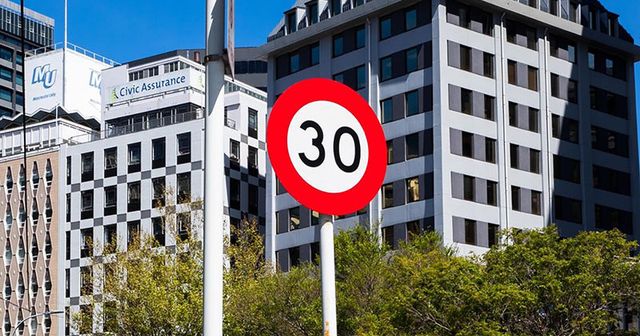
30km/h in the central city from July
- Let's Get Wellington Moving
- From the end of July speed limits on most central city streets will change from 50km to 30km - making our central city more more pleasant and appealing for everyone, especially for people walking and riding bikes. The final decision was made unanimously by Councillors at Wellington City Council on Thursday.
- Accepted from LGWM news by feedreader
- Tagged as:
- councillors
- people
- wellington
- speed-limits
-
-
-

Plastic Free July - what's it all about?
- Wellington City Council
- Last year more than 250,000 New Zealanders participated in Plastic Free July, a global initiative that helps millions of people be part of the solution to plastic pollution.
- Accepted from WCC news HTTPS by feedreader
- Tagged as:
- art
- people
-
-
-

Plimmerton Farm: getting greenfields right
- Talk Wellington
- If we’re hellbent on doing more residential development in greenfields, what does “decent” look like in Plimmerton, hilly land near an existing suburb – like most of our region’s greenfields? This post is basically a guide for anyone who cares about Plimmerton, good urban development, or healthy wetlands, streams and coast, but is time-poor and can’t face going through the truckloads of documents they’ve stuck up without any specific meta-guidance (some FAQ are here). Hopefully this will help you pop in a submission! PCC’s “information” pages they suggest you use for submitting. Every one of these is a large PDF document, 90% written in technical language… aargh! The background: what where and how For those who don’t know, Plimmerton Farm’s a big proposed subdivision of hilly farmland draining into the significant Taupō Wetland and to Plimmerton Beach, just over the train line and highway from Plimmerton village (original Ngāti Toa name: Taupō). It’s going through a Streamlined Planning Process, a pre-COVID government scheme for accelerating development. The key step is the requisite change of the land’s zoning in the Porirua District Plan (“rural” zone to “residential” and other “urban” zones) that sets out what kind of stuff can then be built, where. It’s mostly streamlined because there’s just one shot for the public to have input on the plan change. One shot. Why submit? I was born and raised in Plimmerton, live here now, and intend to for the rest of my days. I’d love to see it grow, well. I would love Plimmerton to get more wallets, more hearts and minds, more faces (more diverse ones too!). But not with more traffic, and pointless damage to our environment. Right now, the proposal has some serious flaws which need sorting. I say Sorting because the changes won’t make it crazy innovative, just good enough for a development in the spot it is, being kicked off in 2020. Time matters too: there’a a bunch of good things happening imminently (and some bad Porirua trends that need to be reversed). I cover these in Get it right, below. It’s worth submitting because given the situation, a 1990s-grade development just won’t cut it. So what about Plimmerton Farm needs to change? It boils down to two themes: dial down the driveability and dial up the liveabilitymake Local the logical and easy choice for daily needs I’ll outline what needs to change in each. NOTE: There’s a third – don’t stuff the wetlands and streams. This is really important as Taupō Wetland is regionally significant, and all our streams and harbours have suffered from frankly shameful mismanagement of sediment from earthworks-heavy subdivisions like Aotea and Duck Creek, and from the earthworks-a-rama of Transmission Gully. Friends of Taupo Swamp have an excellent submission guide for you – add in some of their suggested bits to your submission. I: Dial down the driveability, dial up the liveability There aren’t many truly black-and-white things in life, but there’s one for towns: If a street is nice to drive in, it’ll be a crappy place to do anything else in (walk / eat / hang out / have a conversation / play / scoot or cycle / shop / have a pint). If it’s nice to do anything else in, it’ll be a crappy place to drive in. Mostly this is because of the nature of the automobile: big solid things that smash into our soft bodies if someone makes a mistake (75% odds of death if that’s at 50km/hour, 10% odds of death if at 30km/hour) big objects that need lots of space for manoeuvering and especially parking – which offstreet can be crazy expensive and push up the cost of a home, and onstreet hoover up valuable public space. big solid things driven by us real humans (for a while at least) who respond to the environment but also get distracted, and generally aren’t good at wielding these big solid things safely. The transport setup proposed for Plimmerton Farm makes for a much too driveable and poorly liveable place. 1. Narrow down all the roads. The current proposal’s roading setup has roads and streets that are too big, and there’s too much of them. Right sized roads for a liveable community The cross-sections for the roads include on-street parking and really wide lane widths. This is really gobsmacking for a consortium that talked a big talk about good practice. For all the reasons that Low Traffic Neighbourhoods are good, this is bad. (And it’s especially nuts when you realise that the excessively wide “arterial” roads (11 metres!) will need earthworked platforms built for them where they’re drawn running up the sharp ridges and across the tops of gullies. Expensive, damaging for the environment, and … what were they thinking?) So recommended changes: NARROW DOWN THE ROADS. Seriously. Design all the living-area streets and roads, and the centre, to be self-explaining for an operating traffic speed of 30km or less – that’s the speed where mistakes are rarely fatal. What does that look like? The designers will know and if they don’t they should be fired. Narrower crossing distances; chicanes (great way to incorporate green infrastructure and trees and seating!); narrowed sight-lines (trees! sculpture!) so no-one driving feels inclined to zoom. Reduced trafficked lanes (rori iti on the larger roads!), with properly wide and friendly footpaths. Threshold treatments, humps, modal filters, all the things we know very well are the natural ways to slow us down when driving, and make streets nicer for people. The beauty of all this “restriction” on driving is how much it frees us up for making everything else appealing. Streets become hospitable for kids to walk, scoot, bike to school safely, using the road not the footpath. Older people and those with impairments can walk and wheelchair safely. Teens coming home from town of an evening can scoot or bike home, safely. Popping down to the shops or for a coffee or to the train becomes a pleasure to do on foot, or on a scooter or bike. And you’re moving in a legitimate way – seeing and being seen, not stuck off in the bush on a “recreational” track like what they’ve described. The ordinary streets and roads are walkable, bikeable, scootable, mobility-scootable, and perfectly driveable, equally safe and useable in all weathers and anytime of day or night. Used to be a big, fast road. Now, kids bike to school and old people can chill out on it. (Mark Kerrison) (And in case you’re worried about firetrucks / rubbish trucks / buses, recall that on even Wellington City’s far more winding, narrower hilly streets everyone gets their rubbish collected and fires fought just fine. On public transport, smaller buses, like those that community transport operators use, are the way of the future for less densely-populated areas like this). Don’t build the through and loop roads. You don’t need signs like this when the only people who bother to drive in are those who live there, or who are visiting friends, because you just have to drive out again the way you came. When it’s the place you live, you’re invested in not being a dick far more than if you’re just out for a drive – or worse, out for a bit of a boyrace hoon on a massive loop route through a whole place. So just don’t build those big connector roads that enable people to drive easily from one residential area to the next, especially the ones up in the hilltops (section C) that just say “come for a hoon!” Instead, connect the living spaces heavily with bikeable, walkable, scootable, disability-friendly streets and lanes, and as much as possible, only one way in and out for cars from each living area. II: Make local logical and easy Plimmerton is a true village, with a great little centre (including a train station!) but Plimmerton Farm is ultimately a damn big area. The way to go is to enable people to get the basics of life – like school, groceries, a coffee – with a little local trip on foot, bike or scooter – it’s more of a bother to get in the car. Right now though, it needs two changes: 1. Provide for a second centre “Bumping into” spaces are known to be crucial to a feeling of neighbourhood, and in the (initial) absence of third places (worship places, community hall, sports club, cafe/pub, a supermarket is a vital social centre. Yet the north end of Plimmerton Farm is currently a deadzone for anything except residential. What things will probably look like under current layout. Like in Edwards Scissorhands without the interest of a castle. There’s no provision for a place to do your household groceries, so people will drive to Mana New World – more car trips – and less opportunity to bump into people who live nearby. (There’ll be no school in Plimmerton Farm for a while, because Ministry of Education isn’t allowed by the Education Act to build a school somewhere until there’s a certain population density of kids to fill it. A shitty Catch-22 for developments which is hopefully going to be fixed … sometime. Just another reason to make walking, biking and scooting really kid-friendly, as extra dropoff traffic for kids going to St Theresa’s, Plimmerton School, Paremata and Pukerua Bay schools will be a nightmare.) So they should provide for an additional centre in the north, including a groceries place of some kind. 2. Intensify within walking distance of Plimmerton proper. We should intensify properly, with lots of medium and even some high density (6 storeys of nicely laid-out density done well!) in the area that’s within a 5-minute walk of Plimmerton Village. The more people can live and work with access to all its many amenities, and its rail station (10 min to Porirua, 30 min to Wellington), the better. But there’s not enough density provided for there. Plimmerton Railway station: buzzing in 1916 and has only got bigger. (Photo: Pātaka Porirua Museum) So they should add another zone – E – of higher density in that 5-minute walking catchment of Plimmerton Village. What could it look like? A good example is 3333 Main, Vancouver . Submission tips On the site they ask you to fill in a Word or PDF form, saying which specific bit of the gazillion proposals you are talking about and the specific changes you want. This is a BS way to treat the vast majority of people submitting: normal non-professionals, just regular people who care about good development and liveable places. So just don’t worry about that. In those question 6 column boxes just put “Transport” and “Layout”. It’s the professional planners’ job to figure out specifically how to change a planning document. Just be specific enough that they know what you want to see. The text above is worth copying and pasting – it’ll be enough. And don’t forget the Friends of Taupo Swamp and Catchment advice is essential – definitely go read and use. That’s all you really need – just go submit! But if you’re keen to know more reasons why they should be doing this better, here’s some… Get it right, now Once this plan change is through, traditional developers like Gillies like to whack in all the infrastructure – hello, massive earthworks. And yet the place will take decades to fill with actual people – those hearts and minds and wallets. (Note even before COVID, Porirua’s growth rate was 0.1% per year. Yep, one tenth of one percent.) And extra pressure’s on to do this better because all these things are features of the next one to three years: the One Network Road Classification (sets the design specs for roads of different types) is being updated right now to be more people-friendly in the specs for roads in residential and centre areas, so designs like Plimmerton Farm’s will soon be Officially Bad Practice Sales and riding of e-bikes and e-scooters are going through the roof, continuing through and beyond COVID – this shows no signs of slowing, and prices are dropping. E-power flattens the hills of Plimmerton Farm and makes wheely active travel a breeze for the middle-class people who’ll be living here, if the streets and roads are hospitablePlimmerton Railway Station (on the most popular Wellington train line) is being upgraded to be a terminus station – i.e. better servicesThe Wellington Regional Growth Framework is setting a bunch of directions for councils on how to grow well, including well-known but often well-ignored issues like intensifying around public transport hubs Councils will soon be required to do to a bunch of a bunch of international good practice including get rid of many minimum parking requirements (in the news lately), and to upzone (enable intensification) of landuse in the walking catchment of public transport hubs. (5 min walk = approx 400 metres, 10 min = 800m).Bad trends we need to stop: Porirua’s really high car-dependency (we own cars a lot and drive a lot) is continuing, due to car-dependent urban form [PDF]– despite nice words in council’s strategic intentions.People living outside Wellington City are mostly to blame for our region’s 14% increase in emissions from transport in just 10 years. OK go submit now – and share with anyone who you think might care!
- Accepted from Talk Wellington posts by feedreader
- Tagged as:
- paremata
- porirua
- transmission-gully
- sculpture
- government
- parking
- design
- covid-19
- law
- planning
- wellington
- education
- developments
- sport
- buses
- coffee
- zoo
- people
Porirua, Wellington Region, New Zealand (OpenStreetMap)
-
-
-
Weekly Wrap Up (Week 11, Term 2)
- Wellington High School
- Important Dates Monday 29 June: Open Evening 6pm Wednesday 1 July: Music Evening 7pm Friday 3 July: End of Term 2 Monday 20 July: Start of Term 3 Wednesday 22 July: Parents’ Evening (Senior Students) Monday 27 July: Parents’ Evening (Junior Students) Important Information Board of Trustees by-election results As a result of the recent Board of Trustees by-election, Dr Wyatt Page has been elected to the Board. Wyatt will join the Board with effect from the next meeting on Monday 27 July. Reports and parent-teacher meetings Learning Profile reports for Term 2 are now available for download from the Parent Portal (see Results > Reports). Parent Teacher meetings will take place on Wednesday 22 July (Senior students) and Monday 27 July (Junior students). To make appointments go to: Go to: https://www.schoolinterviews.co.nz/ Enter the code: vdm7q (Juniors) or 5yjhn (Seniors) Choose the SUBJECT then the TEACHER. Please leave a five minute gap between bookings. Note that we are only able to run one conversation with each teacher per student. If you are hearing impaired the Riley Centre can be a challenging environment: please email admin@whs.school.nz and we will aim to accommodate your bookings separately. Revised guidance on testing for COVID-19 The Ministry of Education has circulated the following information to all schools: At a time where there are increasing numbers of colds and other winter illnesses, the Ministry of Health has revised its guidance on who might need testing for COVID-19. It is important to note that there is currently no known community transmission of COVID-19 in New Zealand. The vast majority of adults, children and young people with symptoms consistent with COVID-19 will not have COVID-19. Symptoms of COVID-19 can include new onset or worsening of one or more of the following: Cough Fever Sore throat Runny nose Shortness of breath/difficulty breathing Temporary loss of smell Health’s information on who should get tested notes that people with any of the COVID-19 symptoms who are close contacts of confirmed cases, have recently travelled overseas, or been in contact with recent travellers, should get assessed. If anyone has symptoms but is unsure if they have been exposed to COVID-19, they should ring Healthline on 0800 358 5453 or their GP for advice. Over winter there are many other viruses about that can cause people to feel unwell and have symptoms similar to those of COVID-19. Some people with symptoms consistent with COVID-19 may be tested as part of Health’s ongoing surveillance to ensure that there is no community transmission in New Zealand. If they are not close contacts of confirmed cases, have not recently travelled overseas, or have not been in contact with recent travellers, then there is no need for them to self-isolate while awaiting the test result, and they can return to school once they are feeling well. If not recommended for testing, they will be able to return to school or their early learning service when they are feeling well and no longer displaying symptoms. Wallace Street roadworks update The current phase of the Wallace Street roadworks is due for completion by the end of the month. As long as the rain holds off, Wallace Street should be re-opened to through traffic on 1 July. Following this, however, works will need to get underway along Wallace Street, near Massey University’s entrance, to upgrade wastewater pipes. This will take place in off peak hours (9.00am-4.00pm) on weekdays and traffic will often be reduced to a single lane with Stop / Go control. This is likely to take two months to complete. What’s happening? Economists breakfast with Dr Allan Bollard On Thursday, Year 13 Economics students Sarah Bennett and Rachel Woolcott, attended a Cullen Breakfast at the Wellington Club. Speaking at this week’s breakfast was Dr Alan Bollard, who has held numerous senior positions in Government and interGovernmental agencies. Dr Bollard discussed the economic impact of the covid epidemic and then participated in a question and answer session. Sarah said “the range of angles in the topic discussed was thought provoking”. Rachel commented “it was a very interesting discussion and I enjoyed listening to his jokes and insight.” Year 13 performance of ‘Girls like that’ Evan Placey’s Girls Like That is an ensemble play that explores the pressures young people face today in the face of advancing technologies. Year 13 Drama students produced and performed this play this week. The students are to be congratulated for their sophisticated performance which was an enduring piece of theatre, an achievement all the more impressive when considering that much of this production was conceived and developed during lockdown. Congratulations to all, and to Drama teacher Roger Mantel. He Kākano The He Kākano students have been engaged in a range of creative activities, cognitive thinking skills and maths throughout the week. Winter in the garden The weather over the past few weeks has seen our horticulture students spend time on maintenance, cleaning and repairing tools including secateurs. They will be well prepared for winter pruning and work outside once the weather improves. Instrumental & vocal lessons update If your Junior student is interested in taking instrumental / vocal lessons but has not yet enrolled, please download the form from the Student Hub and hand in or email the completed form to Fritz Wollner Lessons will be reorganised for Terms 3 and 4. If students have not been attending regularly, they need to see Mr Wollner as soon as possible to ensure they do not lose their spot. Achievements National Bridge Speech competition place secured Year 13 Amelia Smith qualified for a place in the National Bridge Speech competition following her success in the regional Chinese speech competition last week. Amelia will represent the North Island outside Auckland region in the competition, to be held at Victoria University on Sunday 2 August. At that event, each qualified candidate will need to present a speech, perform to demonstrate a skill and answer questions in Chinese. Finalists will represent New Zealand and compete with candidates from all over the world in October. We wish Amelia luck as she progresses through the competition. Sports Junior girls football For the first time in many years WHS has a junior girls football team out in competition. Their most recent game resulted in a very close 2-1 loss but the girls had fun and were very impressive despite some players not having very much experience. This team could not have gone ahead without the support of parents who helped with both transport and officiating. Special thanks to Bea Gladding and Jennifer Argyle who are the coach/manager dream team who make this team possible. Below are some photos of the action and sideline support. Basketball Basketball is underway with all teams at WHS having played at least one game so far. Big thanks to Jason Reddish who is taking on the entire boys programme at school which includes four teams and doing a great job. Another big thanks to Nick Andrews who along with a parent is coaching the Senior girls team. Junior Boys play on a Tuesday and another junior team plays on a Thursday. All Senior teams play on Fridays, with the top boys and girls team playing at the ASB Centre. Below are some photos from the first junior basketball game. Boys 1st XI football The 1st XI played their first game of the season, bringing home a 5-1 victory against St Patrick’s Silverstream. Their next fixture is against Newlands College this coming weekend.
- Accepted from WHS news by feedreader
- Tagged as:
- newlands
- water
- government
- transport
- music
- covid-19
- theatre
- wellington
- education
- art
- basketball
- people
Wellington High School, Taranaki Street, Mount Cook, Wellington, Wellington City, Wellington, 6011, New Zealand (OpenStreetMap)
-
-
-
Metlink to boost electric buses from 2 to 22 per cent of its fleet to meet climate change goals and passenger growth
- Greater Wellington Regional Council
- From left to right: Cr Daran Ponter – Chair, Greater Wellington Keven Snelgrove – Tranzit Brendan Prince – NZBus James Howard – Tranzit Cr David Lee – Greater Wellington Cr Roger Blakeley – Greater Wellington The ink has dried on contracts for 98 new electric buses, which will take Metlink’s fleet of electric buses to 108, significantly reducing its carbon footprint and taking Greater Wellington a step closer on its target of carbon neutrality by 2030. Metlink currently has 450 buses in its active fleet in the Wellington region 10 of which are EVs, making up two percent of the fleet. Once the 98 buses are added to the fleet the proportion of EVs will rise to 22 per cent which, excluding market leader China, is high by international standards. Seventy-three of the buses will be used on current scheduled services with a further 25 to be progressively added to routes to meet future network growth. The new electric buses will eventually take 61 diesel buses off the roads, leading to a 17 per cent drop in carbon emissions and a similar reduction in harmful emissions. Greater Wellington is delivering on its promise of a building a modern low emission bus network according to Chair Daran Ponter. “I’m sure that people across the region will be pleased to see another 61 diesel buses taken off the road and this will drive real climate benefits by deploying the new electric buses on high use areas of the network. “Just like our plans for rail, this is also about ensuring we have a fleet in place that can cope with rising population trends and demand for public transport over the next few years. That’s why 25 buses will be used to accommodate forecast passenger growth without an increase in emissions,” added Chair Ponter. Climate Committee chair Cr Thomas Nash said we have to provide attractive alternatives to our current 20th century car culture if we’re serious about responding to climate change. “Over the last two decades transport emissions rose by 14 per cent across the region, mainly from fossil fuel burning cars and trucks. “We need a real step change here and we know we can move far more people with far fewer vehicles if we provide high quality public transport. A modern, comfortable low emission fleet will play a key role in attracting new passengers, encouraging them to embrace public transport. We’ve got an opportunity to break free from the car-dominated landscape that’s been driving pollution in our cities - let’s take it,” added Cr Nash. Roger Blakeley, chair of Greater Wellington’s Transport Committee, said that the new fleet will also attract more bus drivers to the region. “This new fleet shows our intentions for growing the network and obviously more buses means more drivers. We want buses that drivers can be proud of and these state of the art buses, many fitted out right here in New Zealand, will help us attract drivers that want to be at the forefront of the public transport industry in New Zealand and internationally.” As part of the deal, NZ Bus will source 67 ready-to-go large single decker EVs from China and Tranzurban will build 31 double decker EVs at Kiwi Bus Builders in Tauranga, with parts sourced from world leading Chinese bus manufacturers. NZ Bus CEO Barry Hinkley said he was delighted that NZ Bus was making a significant contribution to NZ’s environmental performance, commenting that growing the number of EVs in its fleet is the right way forward as NZ Bus looks to a future of reduced fossil fuel usage. "With these 67 new electric buses, NZ Bus is proud to be having the largest EV bus fleet in New Zealand. With these new orders, we will see our EV fleet grow to at least 85 buses in the short term. "Obviously, we all should try and do as much as we can to look after our environment; taking public transport is a great way of reducing emissions, and electric public transport is an even better way. “We’re committed to doing our bit to help reduce emissions in New Zealand and at the same time provide people with a safe and easy way to get around,” said Mr Hinkley. Tranzurban Director Keven Snelgrove said today’s announcement is a clear demonstration of the company’s commitment to partnering with Greater Wellington and pioneering and investing in electric bus technology and infrastructure in New Zealand. He says the 31 new double deck EVs add to the company’s fleet of 10 New Zealand-built double deck EVs successfully in operation in Wellington already. “This new fleet will deliver multiple benefits of being New Zealand built, adding to our modern and reliable electric bus fleet and help reduce carbon emissions and air pollution for Wellingtonians.” The buses will be delivered between mid-2021 and early 2023.
- Accepted from GW media releases 2019 by feedreader
- Tagged as:
- rowing
- wellington
- art
- buses
- people
- electric-vehicles
-
-
-
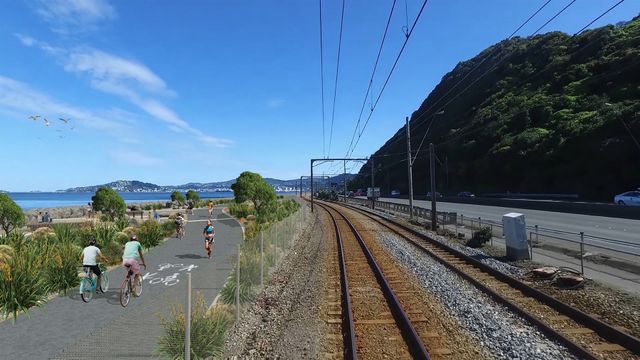
Te Ara Tupua
- Eye of the Fish
- One of Wellington’s long-desired and much awaited projects is apparently to get underway as part of the Government’s shovel-ready infrastructure projects: Te Ara Tupua, aka the Ngauranga to Petone Cycleway.
- Accepted from Eye of the Fish feed by tonytw1
- Tagged as:
- government
- petone
- wellington
- art
- island-bay-cycle-way
Petone, New Zealand (OpenStreetMap)
-
-
-

Mayoral update for 5 June
- Wellington City Council
- Kia ora Wellington, I hope everyone is well, it’s great seeing more people in the city and we are looking forward to Alert Level One.
- Accepted from WCC news HTTPS by feedreader
- Tagged as:
- people
- wellington
-
-
-
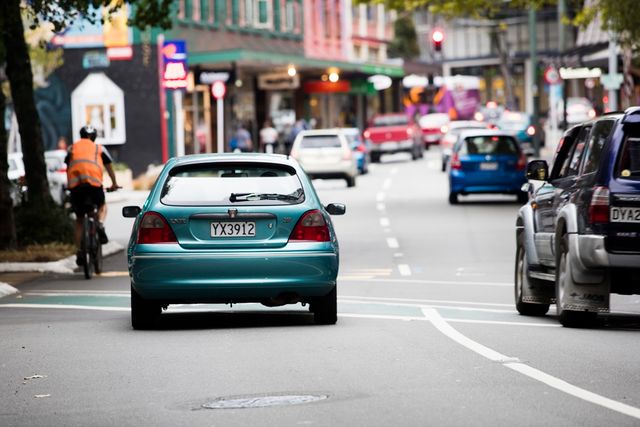
Changes proposed to give people more space
- Wellington City Council
- Concept plans for the temporary street changes proposed for Featherston and Victoria Streets are now online – and there’s an opportunity to provide initial feedback until Thursday 11 June.
- Accepted from WCC news HTTPS by feedreader
- Tagged as:
- people
-
-
-
May update from DCM - together we can end homelessness
- Downtown Community Ministry
- 96 May update from DCM - together we can end homelessness p{ margin:10px 0; padding:0; } table{ border-collapse:collapse; } h1,h2,h3,h4,h5,h6{ display:block; margin:0; padding:0; } img,a img{ border:0; height:auto; outline:none; text-decoration:none; } body,#bodyTable,#bodyCell{ height:100%; margin:0; padding:0; width:100%; } .mcnPreviewText{ display:none !important; } #outlook a{ padding:0; } img{ -ms-interpolation-mode:bicubic; } table{ mso-table-lspace:0pt; mso-table-rspace:0pt; } .ReadMsgBody{ width:100%; } .ExternalClass{ width:100%; } p,a,li,td,blockquote{ mso-line-height-rule:exactly; } a[href^=tel],a[href^=sms]{ color:inherit; cursor:default; text-decoration:none; } p,a,li,td,body,table,blockquote{ -ms-text-size-adjust:100%; -webkit-text-size-adjust:100%; } .ExternalClass,.ExternalClass p,.ExternalClass td,.ExternalClass div,.ExternalClass span,.ExternalClass font{ line-height:100%; } a[x-apple-data-detectors]{ color:inherit !important; text-decoration:none !important; font-size:inherit !important; font-family:inherit !important; font-weight:inherit !important; line-height:inherit !important; } .templateContainer{ max-width:600px !important; } a.mcnButton{ display:block; } .mcnImage,.mcnRetinaImage{ vertical-align:bottom; } .mcnTextContent{ word-break:break-word; } .mcnTextContent img{ height:auto !important; } .mcnDividerBlock{ table-layout:fixed !important; } h1{ color:#222222; font-family:Helvetica; font-size:40px; font-style:normal; font-weight:bold; line-height:150%; letter-spacing:normal; text-align:center; } h2{ color:#222222; font-family:Helvetica; font-size:34px; font-style:normal; font-weight:bold; line-height:150%; letter-spacing:normal; text-align:center; } h3{ color:#444444; font-family:Helvetica; font-size:22px; font-style:normal; font-weight:bold; line-height:150%; letter-spacing:normal; text-align:center; } h4{ color:#949494; font-family:Georgia; font-size:20px; font-style:italic; font-weight:normal; line-height:125%; letter-spacing:normal; text-align:center; } #templateHeader{ background-color:#0f288b; background-image:none; background-repeat:no-repeat; background-position:50% 50%; background-size:cover; border-top:0; border-bottom:0; padding-top:54px; padding-bottom:54px; } .headerContainer{ background-color:transparent; background-image:none; background-repeat:no-repeat; background-position:center; background-size:cover; border-top:0; border-bottom:0; padding-top:0; padding-bottom:0; } .headerContainer .mcnTextContent,.headerContainer .mcnTextContent p{ color:#757575; font-family:Helvetica; font-size:16px; line-height:150%; text-align:left; } .headerContainer .mcnTextContent a,.headerContainer .mcnTextContent p a{ color:#007C89; font-weight:normal; text-decoration:underline; } #templateBody{ background-color:#transparent; background-image:none; background-repeat:no-repeat; background-position:center; background-size:cover; border-top:0; border-bottom:0; padding-top:27px; padding-bottom:54px; } .bodyContainer{ background-color:#transparent; background-image:none; background-repeat:no-repeat; background-position:center; background-size:cover; border-top:0; border-bottom:0; padding-top:0; padding-bottom:0; } .bodyContainer .mcnTextContent,.bodyContainer .mcnTextContent p{ color:#757575; font-family:Helvetica; font-size:16px; line-height:150%; text-align:left; } .bodyContainer .mcnTextContent a,.bodyContainer .mcnTextContent p a{ color:#007C89; font-weight:normal; text-decoration:underline; } #templateFooter{ background-color:#333333; background-image:none; background-repeat:no-repeat; background-position:center; background-size:cover; border-top:0; border-bottom:0; padding-top:45px; padding-bottom:63px; } .footerContainer{ background-color:transparent; background-image:none; background-repeat:no-repeat; background-position:center; background-size:cover; border-top:0; border-bottom:0; padding-top:0; padding-bottom:0; } .footerContainer .mcnTextContent,.footerContainer .mcnTextContent p{ color:#FFFFFF; font-family:Helvetica; font-size:12px; line-height:150%; text-align:center; } .footerContainer .mcnTextContent a,.footerContainer .mcnTextContent p a{ color:#FFFFFF; font-weight:normal; text-decoration:underline; } @media only screen and (min-width:768px){ .templateContainer{ width:600px !important; } } @media only screen and (max-width: 480px){ body,table,td,p,a,li,blockquote{ -webkit-text-size-adjust:none !important; } } @media only screen and (max-width: 480px){ body{ width:100% !important; min-width:100% !important; } } @media only screen and (max-width: 480px){ .mcnRetinaImage{ max-width:100% !important; } } @media only screen and (max-width: 480px){ .mcnImage{ width:100% !important; } } @media only screen and (max-width: 480px){ .mcnCartContainer,.mcnCaptionTopContent,.mcnRecContentContainer,.mcnCaptionBottomContent,.mcnTextContentContainer,.mcnBoxedTextContentContainer,.mcnImageGroupContentContainer,.mcnCaptionLeftTextContentContainer,.mcnCaptionRightTextContentContainer,.mcnCaptionLeftImageContentContainer,.mcnCaptionRightImageContentContainer,.mcnImageCardLeftTextContentContainer,.mcnImageCardRightTextContentContainer,.mcnImageCardLeftImageContentContainer,.mcnImageCardRightImageContentContainer{ max-width:100% !important; width:100% !important; } } @media only screen and (max-width: 480px){ .mcnBoxedTextContentContainer{ min-width:100% !important; } } @media only screen and (max-width: 480px){ .mcnImageGroupContent{ padding:9px !important; } } @media only screen and (max-width: 480px){ .mcnCaptionLeftContentOuter .mcnTextContent,.mcnCaptionRightContentOuter .mcnTextContent{ padding-top:9px !important; } } @media only screen and (max-width: 480px){ .mcnImageCardTopImageContent,.mcnCaptionBottomContent:last-child .mcnCaptionBottomImageContent,.mcnCaptionBlockInner .mcnCaptionTopContent:last-child .mcnTextContent{ padding-top:18px !important; } } @media only screen and (max-width: 480px){ .mcnImageCardBottomImageContent{ padding-bottom:9px !important; } } @media only screen and (max-width: 480px){ .mcnImageGroupBlockInner{ padding-top:0 !important; padding-bottom:0 !important; } } @media only screen and (max-width: 480px){ .mcnImageGroupBlockOuter{ padding-top:9px !important; padding-bottom:9px !important; } } @media only screen and (max-width: 480px){ .mcnTextContent,.mcnBoxedTextContentColumn{ padding-right:18px !important; padding-left:18px !important; } } @media only screen and (max-width: 480px){ .mcnImageCardLeftImageContent,.mcnImageCardRightImageContent{ padding-right:18px !important; padding-bottom:0 !important; padding-left:18px !important; } } @media only screen and (max-width: 480px){ .mcpreview-image-uploader{ display:none !important; width:100% !important; } } @media only screen and (max-width: 480px){ h1{ font-size:30px !important; line-height:125% !important; } } @media only screen and (max-width: 480px){ h2{ font-size:26px !important; line-height:125% !important; } } @media only screen and (max-width: 480px){ h3{ font-size:20px !important; line-height:150% !important; } } @media only screen and (max-width: 480px){ h4{ font-size:18px !important; line-height:150% !important; } } @media only screen and (max-width: 480px){ .mcnBoxedTextContentContainer .mcnTextContent,.mcnBoxedTextContentContainer .mcnTextContent p{ font-size:14px !important; line-height:150% !important; } } @media only screen and (max-width: 480px){ .headerContainer .mcnTextContent,.headerContainer .mcnTextContent p{ font-size:16px !important; line-height:150% !important; } } @media only screen and (max-width: 480px){ .bodyContainer .mcnTextContent,.bodyContainer .mcnTextContent p{ font-size:16px !important; line-height:150% !important; } } @media only screen and (max-width: 480px){ .footerContainer .mcnTextContent,.footerContainer .mcnTextContent p{ font-size:14px !important; line-height:150% !important; } } Here at DCM, we have been determined to do whatever it takes to support our taumai during the COVID crisis. Doing things differently Here at DCM, we have been determined to do whatever it takes to support our taumai during the COVID crisis. For many of us, this has meant taking on different roles and tasks. In our March update, we saw Rob from our Outreach Team manning DCM’s new 0800 number phone support service for our taumai from his home. In our April update, we saw how DCM and Westpac kaimahi immediately worked together to enable our taumai to access their money during lock-down. Today we talk to Paula, a team leader on our Aro Mai team, about the fantastic work she and her team have been doing during this time... Paula As soon as we learned that lock-down was imminent, my team and I had to rapidly shift our focus – from supporting people with long histories of homelessness into permanent housing, to getting people off the streets and in to emergency housing. Together we can end homelessness – yes, this is always what it comes down to. The success of this work has been built on collaboration – in particular, between the government, government agencies and organisations like DCM. Prior to the lock-down, the whole process around emergency housing was slow and complex, but to respond rapidly to the COVID challenge, we were able to work together to rapidly improve and expedite the process. HUD* immediately stepped up; like us, they quickly shifted their focus, organising emergency housing and entering in to contracts with motels and the like, to ensure that the spaces we needed would be available. MSD were regularly in touch with us, asking us what we needed and supporting our work every step of the way. We received referrals from many different sources – from DCM kaimahi and our Outreach Team, but also from Wellington City Council, the police, Probation Services, the hospital and from mental health nurses and services. When it came to placing these people in emergency housing, I was able to work closely with Regina – another key to our success. Reg has been at DCM since 2011; she knows a lot about the most marginalised people, and often knows their story. She offers insight into what will work for them, and what the issues are. Together we could determine the right location, mix of people and a plan for the management of each location. Regina You asked me what success has looked like. To begin with, people have settled and stayed in their emergency housing, and this has actually enabled us to be true to our kaupapa, and to our commitment to Housing First. We have been able to engage with taumai, see them regularly and go forward together. People who have been homeless and who were not on our radar at all have stepped forward. With street begging not an option, limited toilet facilities and with drop-in spaces closed, emergency housing has become much more attractive to those who have been rough sleeping in our city. Now we are in touch with them, building relationships, getting their names on the housing register and – yes! – moving the first of them on in to permanent housing. So it has been a change in focus for me and my team, but ultimately, it has totally supported our over-riding goal as a team and an organisation which is committed to a Housing First kaupapa. *Ministry of Housing and Urban Development (HUD) <!-- --> From emergency housing to a permanent home DCM kaimahi helping taumai move into a permanent home Yes, as Paula says, we can now begin to share the stories of people who have already moved from emergency housing into their own whare. A has had a long history of engagement with DCM; he has been a regular at Te Hāpai, we have supported him to sort his benefit and to get his name on the housing register, he has had dental appointments, seen Te Aro Health nurses and received food support at DCM. A is a very pleasant, quiet and unassuming man who doesn’t ask for support and values his independence. We initially got an emergency housing room for him at AC International; it was immediately clear that a shared place like this didn’t work for him. There were too many people – A was accustomed to living in the bush on his own. We were then able to get him a self-contained place where he could be independent, but where there are also other taumai we are working with. Together, they have formed a very supportive community. They have been company for one another, and have been able to provide advice and support to one another. Dominic from our Aro Mai team then stepped up to support A in to a permanent home. DCM has a strong relationship with Wellington City Housing, and we were able to get A a WCH tenancy – yes, last week, he moved in to his own home. He can walk in to town, and has friends and supports close by. Dominic will continue to check in with him regularly, but A is enjoying the independence that is so important to him. <!-- --> Please help us get the message out there! Forward this email on to everyone you can think of who may be interested in how to respond to homelessness, and just generally people who are passionate about Wellington. <!-- --> Read More Success Stories Nāku te rourou, nāu te rourou, ka ora ai te iwi With your basket and my basket, the people will thrive <!-- --> Copyright © 2020 DCM. All rights reserved. Our mailing address is: DCMPO Box 6133Marion SqWellington, Wellington 6011 New ZealandAdd us to your address book Want to change how you receive these emails? You can update your preferences or unsubscribe from this list.
- Accepted from DCM alerts archive by feedreader
- Tagged as:
- government
- media
- dental
- covid-19
- wellington
- art
- housing
- hospital
- people
-
-
-

Weekly News 25 May 2020
- Wellington Scottish Athletics Club
- Alert Level 2 guidelines Today the Government announced an increase to the number of people who can gather together at Alert Level 2.
- Accepted from WSAC news by feedreader
- Tagged as:
- government
- people
-
-
-
Courtenay Place to close to traffic this weekend for safety
- Wellington City Council
- With bars and nightclubs reopening this weekend concerns that Courtenay Place may experience an influx of people this Friday and Saturday (22 and 23 May) has resulted in a decision to temporarily close the road to traffic for safety reasons.
- Accepted from WCC news HTTPS by feedreader
- Tagged as:
- bars
- people
-
-
-
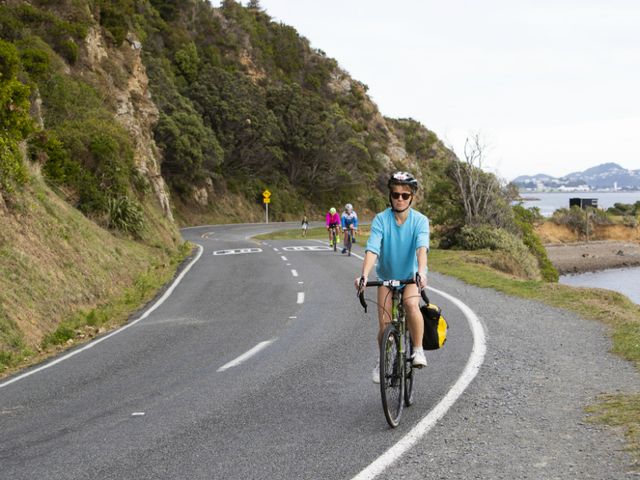
Comments sought on temporary street changes to keep people spaced out
- Wellington City Council
- A 3km shared path between Shelly Bay and Scorching Bay, more space on Stout Street for people walking from the Railway Station, and a bike lane up the Brooklyn hill are among temporary Wellington street changes now open for feedback.
- Accepted from WCC news HTTPS by feedreader
- Tagged as:
- brooklyn
- people
- wellington
Brooklyn, Wellington, New Zealand (OpenStreetMap)
-
-
-

Wellington City Council partners with Rippl for city-wide contact tracing
- Wellington City Council
- Wellington City Council is making it easier for people and businesses to get back to work and play under Alert Levels 1 and 2 by using a secure, easy-to-use contact tracing app, called Rippl.
- Accepted from WCC news HTTPS by feedreader
- Tagged as:
- art
- business
- people
- wellington
-
-
-
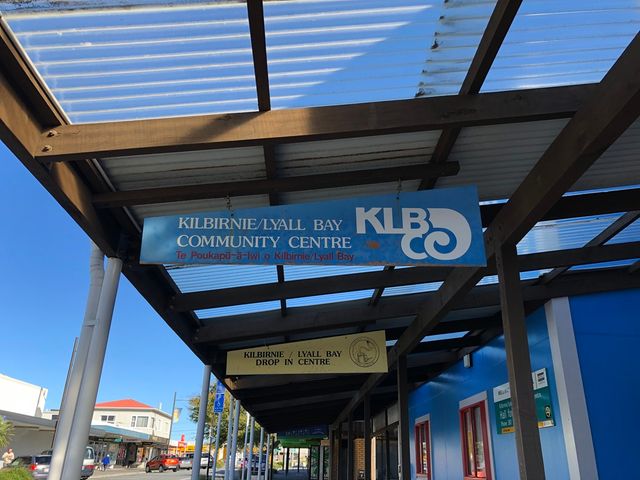
Community support shines in lockdown
- Wellington City Council
- Community centres around Wellington may have been closed during the lockdown, but that didn’t stop the people who run them from reaching out to support their neighbourhoods.
- Accepted from WCC news HTTPS by feedreader
- Tagged as:
- people
- wellington
-
-
-
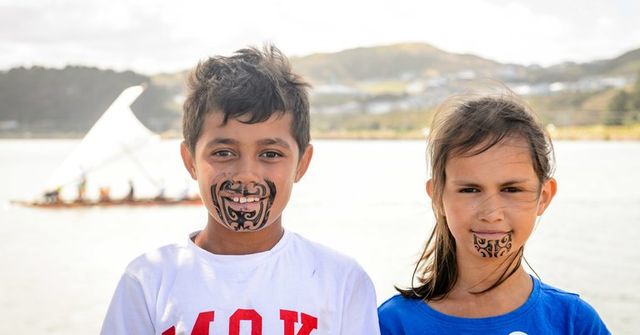
Porirua City Council wins national award for bringing tamariki and rangatahi to the fore
- Porirua City Council
- The Council's approach to children and young people has been nationally recognised.
- Accepted from PCC Latest news items by feedreader
- Tagged as:
- porirua
- people
Porirua, Wellington Region, New Zealand (OpenStreetMap)
-
-
-
April update from DCM - together we can end homelessness
- Downtown Community Ministry
- 96 April update from DCM - together we can end homelessness p{ margin:10px 0; padding:0; } table{ border-collapse:collapse; } h1,h2,h3,h4,h5,h6{ display:block; margin:0; padding:0; } img,a img{ border:0; height:auto; outline:none; text-decoration:none; } body,#bodyTable,#bodyCell{ height:100%; margin:0; padding:0; width:100%; } .mcnPreviewText{ display:none !important; } #outlook a{ padding:0; } img{ -ms-interpolation-mode:bicubic; } table{ mso-table-lspace:0pt; mso-table-rspace:0pt; } .ReadMsgBody{ width:100%; } .ExternalClass{ width:100%; } p,a,li,td,blockquote{ mso-line-height-rule:exactly; } a[href^=tel],a[href^=sms]{ color:inherit; cursor:default; text-decoration:none; } p,a,li,td,body,table,blockquote{ -ms-text-size-adjust:100%; -webkit-text-size-adjust:100%; } .ExternalClass,.ExternalClass p,.ExternalClass td,.ExternalClass div,.ExternalClass span,.ExternalClass font{ line-height:100%; } a[x-apple-data-detectors]{ color:inherit !important; text-decoration:none !important; font-size:inherit !important; font-family:inherit !important; font-weight:inherit !important; line-height:inherit !important; } .templateContainer{ max-width:600px !important; } a.mcnButton{ display:block; } .mcnImage,.mcnRetinaImage{ vertical-align:bottom; } .mcnTextContent{ word-break:break-word; } .mcnTextContent img{ height:auto !important; } .mcnDividerBlock{ table-layout:fixed !important; } h1{ color:#222222; font-family:Helvetica; font-size:40px; font-style:normal; font-weight:bold; line-height:150%; letter-spacing:normal; text-align:center; } h2{ color:#222222; font-family:Helvetica; font-size:34px; font-style:normal; font-weight:bold; line-height:150%; letter-spacing:normal; text-align:center; } h3{ color:#444444; font-family:Helvetica; font-size:22px; font-style:normal; font-weight:bold; line-height:150%; letter-spacing:normal; text-align:center; } h4{ color:#949494; font-family:Georgia; font-size:20px; font-style:italic; font-weight:normal; line-height:125%; letter-spacing:normal; text-align:center; } #templateHeader{ background-color:#0f288b; background-image:none; background-repeat:no-repeat; background-position:50% 50%; background-size:cover; border-top:0; border-bottom:0; padding-top:54px; padding-bottom:54px; } .headerContainer{ background-color:transparent; background-image:none; background-repeat:no-repeat; background-position:center; background-size:cover; border-top:0; border-bottom:0; padding-top:0; padding-bottom:0; } .headerContainer .mcnTextContent,.headerContainer .mcnTextContent p{ color:#757575; font-family:Helvetica; font-size:16px; line-height:150%; text-align:left; } .headerContainer .mcnTextContent a,.headerContainer .mcnTextContent p a{ color:#007C89; font-weight:normal; text-decoration:underline; } #templateBody{ background-color:#transparent; background-image:none; background-repeat:no-repeat; background-position:center; background-size:cover; border-top:0; border-bottom:0; padding-top:27px; padding-bottom:54px; } .bodyContainer{ background-color:#transparent; background-image:none; background-repeat:no-repeat; background-position:center; background-size:cover; border-top:0; border-bottom:0; padding-top:0; padding-bottom:0; } .bodyContainer .mcnTextContent,.bodyContainer .mcnTextContent p{ color:#757575; font-family:Helvetica; font-size:16px; line-height:150%; text-align:left; } .bodyContainer .mcnTextContent a,.bodyContainer .mcnTextContent p a{ color:#007C89; font-weight:normal; text-decoration:underline; } #templateFooter{ background-color:#333333; background-image:none; background-repeat:no-repeat; background-position:center; background-size:cover; border-top:0; border-bottom:0; padding-top:45px; padding-bottom:63px; } .footerContainer{ background-color:transparent; background-image:none; background-repeat:no-repeat; background-position:center; background-size:cover; border-top:0; border-bottom:0; padding-top:0; padding-bottom:0; } .footerContainer .mcnTextContent,.footerContainer .mcnTextContent p{ color:#FFFFFF; font-family:Helvetica; font-size:12px; line-height:150%; text-align:center; } .footerContainer .mcnTextContent a,.footerContainer .mcnTextContent p a{ color:#FFFFFF; font-weight:normal; text-decoration:underline; } @media only screen and (min-width:768px){ .templateContainer{ width:600px !important; } } @media only screen and (max-width: 480px){ body,table,td,p,a,li,blockquote{ -webkit-text-size-adjust:none !important; } } @media only screen and (max-width: 480px){ body{ width:100% !important; min-width:100% !important; } } @media only screen and (max-width: 480px){ .mcnRetinaImage{ max-width:100% !important; } } @media only screen and (max-width: 480px){ .mcnImage{ width:100% !important; } } @media only screen and (max-width: 480px){ .mcnCartContainer,.mcnCaptionTopContent,.mcnRecContentContainer,.mcnCaptionBottomContent,.mcnTextContentContainer,.mcnBoxedTextContentContainer,.mcnImageGroupContentContainer,.mcnCaptionLeftTextContentContainer,.mcnCaptionRightTextContentContainer,.mcnCaptionLeftImageContentContainer,.mcnCaptionRightImageContentContainer,.mcnImageCardLeftTextContentContainer,.mcnImageCardRightTextContentContainer,.mcnImageCardLeftImageContentContainer,.mcnImageCardRightImageContentContainer{ max-width:100% !important; width:100% !important; } } @media only screen and (max-width: 480px){ .mcnBoxedTextContentContainer{ min-width:100% !important; } } @media only screen and (max-width: 480px){ .mcnImageGroupContent{ padding:9px !important; } } @media only screen and (max-width: 480px){ .mcnCaptionLeftContentOuter .mcnTextContent,.mcnCaptionRightContentOuter .mcnTextContent{ padding-top:9px !important; } } @media only screen and (max-width: 480px){ .mcnImageCardTopImageContent,.mcnCaptionBottomContent:last-child .mcnCaptionBottomImageContent,.mcnCaptionBlockInner .mcnCaptionTopContent:last-child .mcnTextContent{ padding-top:18px !important; } } @media only screen and (max-width: 480px){ .mcnImageCardBottomImageContent{ padding-bottom:9px !important; } } @media only screen and (max-width: 480px){ .mcnImageGroupBlockInner{ padding-top:0 !important; padding-bottom:0 !important; } } @media only screen and (max-width: 480px){ .mcnImageGroupBlockOuter{ padding-top:9px !important; padding-bottom:9px !important; } } @media only screen and (max-width: 480px){ .mcnTextContent,.mcnBoxedTextContentColumn{ padding-right:18px !important; padding-left:18px !important; } } @media only screen and (max-width: 480px){ .mcnImageCardLeftImageContent,.mcnImageCardRightImageContent{ padding-right:18px !important; padding-bottom:0 !important; padding-left:18px !important; } } @media only screen and (max-width: 480px){ .mcpreview-image-uploader{ display:none !important; width:100% !important; } } @media only screen and (max-width: 480px){ h1{ font-size:30px !important; line-height:125% !important; } } @media only screen and (max-width: 480px){ h2{ font-size:26px !important; line-height:125% !important; } } @media only screen and (max-width: 480px){ h3{ font-size:20px !important; line-height:150% !important; } } @media only screen and (max-width: 480px){ h4{ font-size:18px !important; line-height:150% !important; } } @media only screen and (max-width: 480px){ .mcnBoxedTextContentContainer .mcnTextContent,.mcnBoxedTextContentContainer .mcnTextContent p{ font-size:14px !important; line-height:150% !important; } } @media only screen and (max-width: 480px){ .headerContainer .mcnTextContent,.headerContainer .mcnTextContent p{ font-size:16px !important; line-height:150% !important; } } @media only screen and (max-width: 480px){ .bodyContainer .mcnTextContent,.bodyContainer .mcnTextContent p{ font-size:16px !important; line-height:150% !important; } } @media only screen and (max-width: 480px){ .footerContainer .mcnTextContent,.footerContainer .mcnTextContent p{ font-size:14px !important; line-height:150% !important; } } Reaching out to the most marginalised – during lock-down Reaching out to the most marginalised – during lock-down Natalia and Chris catch up with Mark in Te Aro Park During the COVID crisis, the priority for DCM’s Street Outreach team has been connecting with people rough sleeping or who are sleeping in their cars, and getting them in to emergency accommodation. “Government and other agencies worked together to rapidly increase the supply of emergency housing in response to the pandemic, and so we have been able to get rooms for many of these people, some of whom were not even prepared to consider such an option before the lock-down,” explains Outreach team leader, Natalia. “At DCM we often talk about 'Ki te hoe' or 'pick up the paddle'. What is it that motivates someone to finally pick up the paddle and do what it takes to get off the streets and into housing? In this case, concerns about limited access to food and toilets during lock-down, seeing that there weren’t the same opportunities to supplement their income through street begging with the streets empty, and being offered appealing accommodation, including new facilities, some of which also provide three meals a day. COVID-19 and the lock-down have offered us a unique opportunity in our work to end homelessness.” With a growing group of rough sleepers in emergency housing, the Outreach team can now prioritise supporting them to take the next steps. “We are seeing rough sleepers who were very reluctant to try emergency housing, even during the lock-down, now thriving in their new accommodation. The next step is to follow up with these taumai, and to have more kōrero with them about housing. There’s a window of opportunity while we know where they are, to talk about their situations and to do the groundwork to get them on the path to housing.” DCM is totally committed to a Housing First approach; this means that we will work with those we have been able to get off the streets and in to emergency housing, to get their names on to the social housing register and to work together to access a permanent home for them. This is something that for many of them would have been inconceivable a few months ago; but now they have taken a giant step, and this has opened up a whole new world of possibilities to them. Who knew that a time like this could be the greatest support in achieving our goal of ending homelessness in our city? This is part of a longer story about the mahi which DCM’s Street Outreach team is doing during lock-down: read the full story on our website. <!-- --> “Together we can” – find innovative solutions during lock-down Natalia out on outreach during Level 3, speaks to a man outside Westpac on Lambton Quay Some of the most marginalised people in our city have no home, no income and no ID. When these people are unable to access a bank account of their own, DCM provides them with a money management service, accesses a benefit for them and pays their bills; they then receive the remainder of their money by cheque. These cheques have to be cashed at a bank branch. This not only presented a significant problem during lock-down, but was potentially no longer a viable long-term option. DCM approached MSD and Westpac, and together came up with a solution which will make a difference in the lives of the poorest people during the current crisis and well beyond. Instead of receiving a weekly cheque, these people are now able to use a payment card supplied by Westpac. “Usually this would take a couple of months to organise, but we expedited it within two weeks so that these people could have their money,” Transactional Solutions Manager at Westpac, Julia Hopkins, says. It works like a debit card but is called a ‘prepaid card’ so DCM can put the amount of discretionary income which would have previously been paid out as a cash cheque onto the card, and the person can spend up to that limit. This is a fantastic step change, as we have grappled for some time with the problem of how to continue to deliver our money management service when cheques are ultimately phased out. The new initiatives which have enabled us to continue to support the most marginalised people in our city during the COVID-19 pandemic, also offer long-term benefits and solutions for our taumai. Ehara taku toa i te toa takitahi, he toa takitini – Success is not the work of one, but the work of many. <!-- --> “Together we can” – an important conversation and shared commitment This morning the entire DCM team was thrilled to have the opportunity to meet with our local MP and New Zealand’s Minister of Finance, Grant Robertson – that’s 32 of us participating in a Zoom hui! We were able to share with him some of our learnings from recent weeks - the positive things and the challenges - and we were all uplifted by his responses. We updated Grant on the practical and innovative ways that DCM has responded to the crisis, and shared some of the positives, including: the speed at which a whole new stock of emergency housing has been made available, and the excellent way in which the partnership between DCM, government, MSD and HUD, and other community agencies, has been working. Everyone has had a can-do attitude. Amongst the concerns we were able to raise: The need to increase the stock of permanent housing, for people to move from emergency housing into their own homes During lock-down it has become clear that the level of substance misuse is larger than even we knew, and we will need more specialist drug and alcohol support in the future There are gaps around the integration of people exiting prison. During lock-down, we have had a significant number of taumai come to us direct from prison, including people who have served long prison terms sent to us to house in emergency housing. Grant acknowledged the courage and compassion that DCM has showed as we have kept working with vulnerable people. He spoke about a commitment to “Build Back Better” across a range of domains – from inequality and income support to a low carbon future. And he invited DCM to be a part of this: “In the midst of this crisis, there is also a chance to look out to the horizon. We get to re-set things a bit; there is an opportunity here, and we need your help to co-design this new future.” Stephanie thanked him, accepted his challenge and issued another on behalf of DCM: “Thank you for the leadership you and the Prime Minister have shown to us as a nation. You have made bold decisions for us and you have shown the world this can be done with compassion and kindness” ... “Grant, we don’t want anyone to go backwards from here. Your government has often spoken about going hard, going fast. We have seen rapid decision-making and the benefits of this; let’s continue to go hard and go fast to end homelessness.” <!-- --> Please help us get the message out there! Forward this email on to everyone you can think of who may be interested in how to respond to homelessness, and just generally people who are passionate about Wellington. <!-- --> Read More Success Stories Nāku te rourou, nāu te rourou, ka ora ai te iwi With your basket and my basket, the people will thrive <!-- --> Copyright © 2020 DCM. All rights reserved. Our mailing address is: DCMPO Box 6133Marion SqWellington, Wellington 6011 New ZealandAdd us to your address book Want to change how you receive these emails? You can update your preferences or unsubscribe from this list.
- Accepted from DCM alerts archive by tonytw1
- Tagged as:
- accommodation
- government
- media
- design
- covid-19
- rowing
- wellington
- art
- housing
- zoo
- people
Wellington Zoological Gardens, Manchester Street, Melrose, Wellington, Wellington Region, 6021, New Zealand (OpenStreetMap)
-
-
-
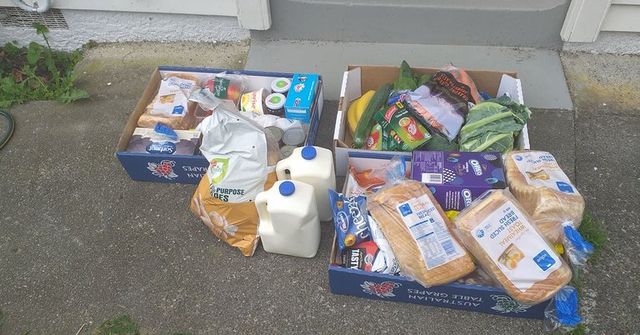
Council working to support Porirua people in need
- Porirua City Council
- Food and medicine are getting to people who need it in Porirua.
- Accepted from PCC Latest news items by feedreader
- Tagged as:
- porirua
- people
Porirua, Wellington Region, New Zealand (OpenStreetMap)
-
-
-
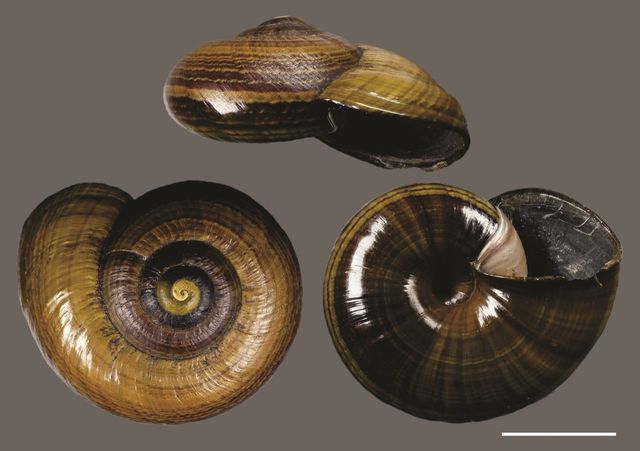
The carnivorous giant snails of Khandallah, Wellington
- Te Papa's blog
- Endangered giant snails that suck up earthworms like spaghetti are living in a small colony in Khandallah. Curator Invertebrates Rodrigo Salvador tells us more.Read more The post The carnivorous giant snails of Khandallah, Wellington appeared first on Te Papa’s Blog.
- Accepted from Te Papa blog feed by tonytw1
- Tagged as:
- khandallah
- te-papa
- wellington
- art
- rates
Te Papa, 55, Cable Street, Te Aro, Wellington, Wellington City, Wellington, 6011, New Zealand (OpenStreetMap)
-
-
-
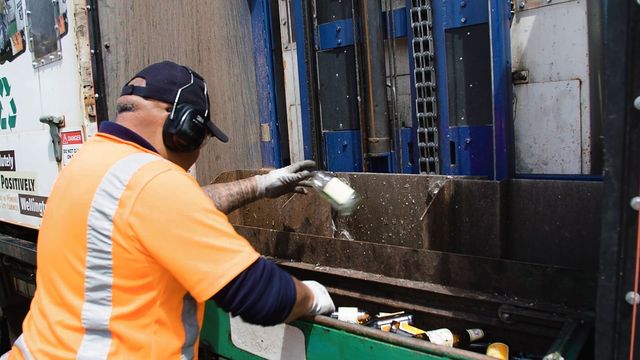
Health and safety at heart of decision to put recycling on hold
- Wellington City Council
- Tens of thousands of beverage bottles that have touched people’s mouths isn’t what the average person would want to be handling during a life-threatening pandemic.
- Accepted from WCC news HTTPS by feedreader
- Tagged as:
- health
- recycling
- cycling
- art
- people
-
-
-

Post-COVID stimulus: THE WELLINGTON UPGRADE!
- Talk Wellington
- As loads of government folks burn midnight oil defending us from the COVID-19 pandemic, others are looking at how to stimulate our economy.
- Accepted from Talk Wellington posts by feedreader
- Tagged as:
- covid-19
- government
- wellington
-
-
-

Message to all Wellingtonians
- Wellington City Council
- The Covid-19 pandemic is having a devastating impact globally. Thousands of people have already died, and many countries are in some form of lockdown.
- Accepted from WCC news HTTPS by feedreader
- Tagged as:
- covid-19
- people
- wellington
-
-
-
Minutes of the March 2020 Meeting
- Newtown Residents' Association
- Minutes of the Newtown Residents’ Association meeting 16th March 2020 Present: Rhona Carson (Chair), Steve Cosgrove (Minutes), Leonie Walker, Jane Patterson, Jill Ford, Alison Borbelly, Keith Powell, Tom Law, Don McDonald, Warwick Taylor, Peter Frater, Effie Rankin, Faye Tohbyn, Lyn Morris, Sam Somers, Eileen Brown, Neville Carson, Kevin Lethbridge, Graeme Carroll, Merio Marsters, Marion Leighton. Apologies: Paul Eagle, Dom Shaheen, Steve Dunn, Martin Hanley, Anna Kemble Welch, Jan Gould + Marion Leighton(for lateness)Noted that Paul apologised because MPs have been advised to stay away from community meetings due to Covid-19 risks.. Rhona welcomed everyone to the meeting. Newtown Festival Rhona thanked all the marshalls and other volunteers for helping. The meeting made an enthusiastic vote of thanks and appreciation to the organisers for another very successful Festival.Sadly there was one violent event later in the evening; this seemed to be the result of a personal conflict between two visitors to Newtown. The Police and Community Patrol were involved. Don asked what the noise policy is, as he worries about how loud the Festival is. Tom Law outlined the Council policy. Wellington City Council Consultations Parking Policy. Consultation opened today and will run till April 14th. WCC had a traveling road show on the subject in Newtown Mall this morning. It wasn’t widely advertised and no one at the meeting knew it was going to be there, or attended.Rhona noted that the policy is very high-level at this stage. We recommend that people look at the material on the website. The questions on the web site are quite general so Newtown-specific concerns would need to be added in narrative form.Some general issues were discussed.We will consider different things we can agree on, such as further communication with WCC to develop a Newtown-specific plan, and sensible Residents’ Parking areas and fees. Planning for Growth The WCC Consultation Team were to have a Newtown Festival stall but cancelled because they were not quite ready to go. Next consultation meeting is on 26 March at Prefab – Jane and Rhona interested in going. No one had any further comment: Rhona suggested reading the web page and keeping up-to-date with progress on the development of a proposed spatial plan for the city.District Plan Review – this is beginning at the end of this year or early next. Water Warrick is concerned that water metres are coming back into discussion. This has resulted in some suggesting we ‘need’ water metres to pay for replacement of aged infrastructure.A number of views were expressed regarding the pros and cons of water metering. COVID-19 Eileen Brown is working for the Council of Trade Unions developing plans and consolidating ideas for “managing the risk and flattening the curve”.The current situation was outlined, along with common narratives being used to describe the situation and management options. Eileen described then distributed some information.Marion Leighton (Consultant Physician at Wellington Hospital) arrived during this discussion, having been at a hospital meeting on the same topic. She outlined the hospital’s plans for managing an influx of seriously ill patients and also answered questions. Most important thing is to wash hands frequently and thoroughly, cough and sneeze into your elbow or tissues, don’t touch your face, avoid physical contact with others and self-isolate at the first sign of any symptoms. We are in this for the long-term, so make sure you have a reasonable plan. Emergency Management Discussion Neville Carson outlined his background in Civil Defence (previous name for Emergency Management, and introduced “Wellington Conversations” – facilitated conversations on various topics which have been running in Newtown and elsewhere for several months.Neville is organising a meeting to discuss Emergency Management issues on 31 March, 7:30 to 9:30, at Newtown Hall, using a model based on Wellington Conversations. Circus Performers – Steve informed the meeting that on Wednesday evening (18th Mcaarch) in Carrara Park circus performers will be performing with LED Hula hoops. Meeting ended at 8:58
- Accepted from NRA news by feedreader
- Tagged as:
- newtown
- wellington-city-council
- covid-19
- water
- consultation
- parking
- law
- planning
- wellington
- art
- noise
- hospital
- people
Newtown, Wellington, Wellington City, Wellington, New Zealand (OpenStreetMap)
-
